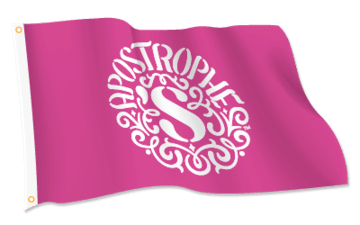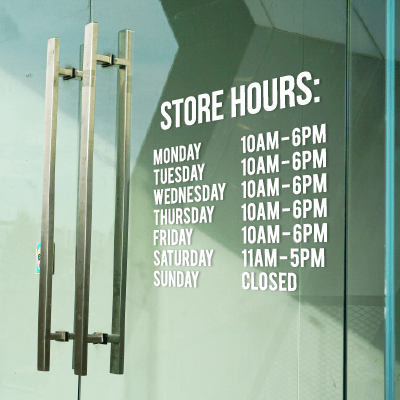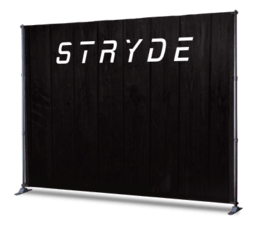The Social Media Sweet Spot: How Americans Discover and Trust Small Businesses Online
From scroll speed to trust signals, new survey data reveals what drives action on social media.

Social media has become the new storefront window for small businesses — something businesses are increasingly investing in to either market their brand or sell their products or services. While businesses may invest more time and effort into social media, not all may be honing in on the proper methods. For example, with the average attention span lasting only 47 seconds, publishing long-form podcasts about your product may not always be the best method.
To help small business owners market smarter, not harder, Signs.com surveyed 1,000 Americans to uncover how consumers today discover new businesses, what inspires trust, and which types of content drive them to purchase. The findings reveal that all businesses can find social media “sweet spots” for engagement that vary by platform, content type, and generation.
Key Takeaways
- • 61% of Americans discovered a small business through Facebook in the past six months, followed by YouTube (48%), Instagram (46%), and TikTok (45%).
- • Nearly half (49%) spend 10 seconds or less on a small business post before deciding to scroll past.
- • 48% say AI-generated content makes them less likely to trust a small business’s social media presence.
- • Nearly 3 in 5 (59%) have purchased from a small business because of their social media content.
- • 52% were most influenced by customer testimonials or reviews when deciding to buy from a small business.
- • Gen Z is the most likely to find small businesses on TikTok (75%) and Instagram (70%).
Where Americans Discover Small Businesses on Social Media
Discovery is the first step in any customer journey — and for small businesses, the right platform can make all the difference. When picking the social media site to invest in, the most popular social media sites may also indicate which sites would be worthwhile to post on. The top five of Statista’s most popular social media sites were also among the top social media sites that most of our survey respondents used to discover new small businesses. In particular, when asked where they’re most likely to find new small brands or products, 61% of U.S. consumers said Facebook. But the picture shifts dramatically by age group.
For example, millennials and Gen X were the biggest Facebook discoverers, at 69% and 57% respectively. But for Gen Z, Facebook trailed behind other platforms. Just 53% said they discovered businesses there. Instead, 70% of Gen Z and 54% of millennials discover brands on Instagram, and 76% of Gen Z also cited TikTok — making it their top discovery tool.
YouTube emerged as a steady player across generations, particularly among millennials (53%) and Gen Z (60%). Another emerging channel for younger consumers is Reddit. While it didn’t rank among the top platforms overall, 17% of Gen Z and 14% of millennials said they’ve discovered small businesses through Reddit.
The Content People Trust Most
While many businesses may look to social media algorithms to dictate what content they should publish, looks can be deceiving, especially in the eyes of the consumer. When asked which types of content they trust most, 31% of consumers said user-generated content (UGC) — the highest overall. Brand-created visuals came next at 27%, followed by influencer shoutouts or reviews at 20%
Gen Z stood out for their high trust in influencer content, with 30% citing shoutouts or reviews as most trustworthy — far above boomers at just 4%. Individuals in Gen Z also gravitated toward unboxing or haul videos (29%) more than any other age bracket. Millennials, meanwhile, leaned into more polished sources like brand-created videos (30%) and behind-the-scenes content (21%). Older generations showed a stronger preference for user-generated content, with 33% of Gen X and 31% of boomers selecting it as their most trusted source.
What Breaks Trust on Social Media
When it comes to trusting businesses, the newest innovations in marketing aren’t always the most reliable, according to consumers. For instance, McKinsey found that 29% of businesses are either planning to use or have already scaled AI within marketing and sales operations. Despite this, more and more consumers see a reliance on AI as a red flag, especially among our survey respondents. Nearly half of respondents (48%) said that using AI-generated content made a post feel less trustworthy, making it the most common concern overall. It isn’t just AI, either. Stock photos came next, cited by 41%, followed by posts that omit pricing or key details (38%) and overly polished visuals (38%).
Red flags varied by generation. Gen Z expressed the strongest skepticism toward AI-generated content (64%) and stock imagery (50%). Millennials also viewed those signals negatively, while Gen X and boomers were more likely to focus on missing product information, with 43% of both groups citing it as a concern. Among all age groups, Boomers stood out for being least responsive to turned-off comments (46%) and paid partnership labels (36%).
While many businesses may see higher production value as a best practice, the data points to a more complicated reality — one where high-effort posts can still erode trust if they lack transparency or feel impersonal. Instead, authentic, tried, and true marketing materials still have the potential to yield the best results in the age of AI.
Content that Captures Consumers’ Attention Spans
With more than 64% of Americans admitting to “doomscrolling” — the act of mindlessly scrolling without the intention to stop — it’s becoming more and more challenging to capture the attention of users. While some businesses may ask themselves how short their content must be to capture our collective attention spans, that’s not necessarily the right question. Instead, our survey found that it may be more prompt to ask the type of content that stops users in their tracks.
When we asked what types of small business content kept people watching for at least 10 seconds, reviews came out on top. About 35% said they stuck around for customer testimonials, followed by personal stories (31%) and funny or relatable hooks (29%). Before-and-after comparisons also held attention for a solid chunk of viewers (28%).
Younger users were especially likely to pause for humor and trends. Gen Z was the most engaged group for funny hooks (37%) and eye-catching visuals (33%), while millennials showed nearly as much interest in both. Gen X and boomers leaned more toward practical formats like before-and-after posts — and across every generation, customer reviews consistently held attention. Scroll time may be short, but the right story can still stop thumbs mid-swipe.
Some formats, however, struggled to capture attention at all. When asked what they usually skip, respondents pointed most often to AI-generated or automated content (29%), followed by posts about social or political topics (22%), trending audio or format-driven posts (19%), personal stories or business journeys (11%), and before-and-after comparisons (10%). Consumers may view this type of content as either inflammatory or something they simply don’t resonate with.
The Content That Converts
Not all content just builds awareness — some drives real action. When asked which types of posts were most likely to influence a purchase, more than half of respondents (52%) pointed to customer testimonials or reviews. Product demos or tutorials followed at 43%, suggesting that proof and clarity often carry the most weight in driving conversion.
These top-performing formats showed relatively consistent influence across age groups, but some generational differences stood out. Gen X showed the strongest response to product demos, with 50% saying these posts swayed their decisions. Boomers also placed above-average trust in demos (41%) and gave higher-than-average weight to behind-the-scenes or origin story content (26%).
Younger consumers leaned more heavily into trend-driven content. Thirty percent of Gen Z said trends like “TikTok Made Me Buy It” or GRWM-style posts — where influencers divulge their favorite products — persuaded them to make their own purchase. Gen Z was also most likely to be swayed by before-and-after content (30%), while millennials responded most to customer reviews (52%) and giveaways or promotions (28%).
With the vast array of content that influences consumers’ decisions, it’s no wonder that many businesses take a broad marketing approach and utilize every type of advertising available.
How Small Businesses Can Own Their Sweet Spot
Ultimately, social media marketing is a constantly changing game. Different formats play different roles across the funnel, and not every post performs the same way. Small businesses that align content types with platform behaviors and consider how audiences engage in real time may be able to build trust and drive meaningful interaction, as opposed to those who don’t take these considerations into account.
At the end of the day, how audiences view your social media content depends on how you’re delivering it and who is looking at it. What matters most is that you take a look at your strategy and change it in ways that reflect how people actually find, evaluate, and engage with content online.
Methodology
We surveyed 1,000 U.S. consumers. Responses were stratified and segmented by age, gender, and other key demographics to ensure balanced insights. All responses were self-reported, and due to rounding, some percentages may not add up to exactly 100%.
About Signs.com
Signs.com is a leading provider of custom signage for businesses of all sizes. From banners and decals to fully customized storefront displays, Signs.com empowers entrepreneurs and organizations to create high-quality, professionally designed signage that makes an impact — online and offline.
Fair Use Statement
This content is available for non-commercial use. When referencing this study, please credit Signs.com and include a link back to this page.



































